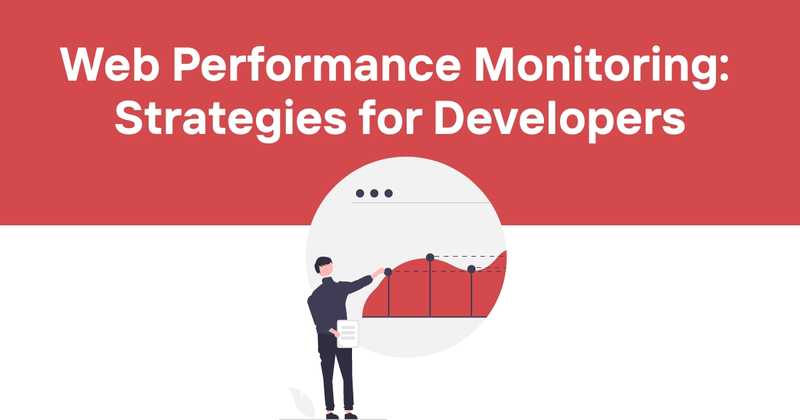Website Downtime: The Invisible Profit Killer (And How to Stop It)
Let's face it - website downtime sucks. One minute your online store is humming along, raking in sales. The next? Crickets. Your site's down, customers are frustrated, and money's flying out the window faster than you can say "server error."
I've been there, and it's not fun. As a developer who's battled more than my fair share of crashes and outages, I've learned the hard way just how costly downtime can be. But I've also discovered some killer strategies for keeping sites up and running smoothly.
So grab a coffee (or something stronger - I won't judge), and let's dive into the wild world of website downtime. We'll explore why it happens, how much it really costs, and most importantly - how you can fight back and keep your site online 24/7/365.
Table of Contents
- The True Cost of Downtime
- Common Causes of Website Crashes
- Warning Signs Your Site Might Go Down
- How to Check if a Website is Down
- Proactive Strategies to Prevent Downtime
- Responding to Outages: Damage Control 101
- Choosing the Right Uptime Monitoring Tool
- Setting Up Effective Alerts
- The Power of Status Pages
- Measuring and Improving Uptime
The True Cost of Downtime
"It's just a few minutes of downtime, what's the big deal?" Oh, my sweet summer child. Let me tell you - those minutes add up fast, and they're more expensive than you'd think.
Here's a sobering stat for you: According to Gartner, the average cost of IT downtime is $5,600 per minute. That's $336,000 an hour, folks. Hope you're sitting down for that one.
But it's not just about cold, hard cash. Downtime costs you in other ways too:
- Lost sales and revenue
- Damaged brand reputation
- Decreased customer loyalty
- Reduced employee productivity
- Potential legal issues
And here's the kicker - the longer your site's down, the worse it gets. A brief blip might be forgiven, but extended outages? That's when customers start jumping ship to your competitors.
I once worked with an e-commerce client who lost $50,000 in sales during a 2-hour outage. Worse, their support team was swamped for days afterward dealing with angry customers. Not. Fun.
Common Causes of Website Crashes
Alright, now that I've thoroughly terrified you about the consequences of downtime, let's talk about why sites go down in the first place. Spoiler alert: it's usually not just one thing, but a perfect storm of issues.
-
Server Overload: Your poor server's chugging along, then BAM - traffic spike. It's like trying to stuff a watermelon through a garden hose. Result? Crash city.
-
Software Bugs: We've all been there. Push that new feature live and... oops. Turns out that one line of code just broke everything. (Pro tip: Always, ALWAYS test in staging first.)
-
Database Issues: Databases are the unsung heroes of the web. When they hiccup, your whole site can go down faster than you can say "SQL injection."
-
Network Problems: Sometimes it's not even your fault. ISP issues, DNS problems, or good old-fashioned cable cuts can take you offline.
-
Cybersecurity Attacks: DDoS attacks, malware, hackers... the internet can be a dangerous place. One successful breach and your site's toast.
-
Human Error: Look, we're all human. Sometimes Bob from IT accidentally unplugs the wrong server. It happens. (Sorry, Bob.)
-
Third-Party Service Failures: Using a bunch of external APIs and services? Great for functionality, not so great when one of them goes down and takes you with it.
-
Hardware Failures: Servers are machines, and machines break. Hard drives fail, processors overheat, and suddenly you're scrambling for backups.
The tricky part? Often it's a combination of these factors. Like that time a client's site went down because a traffic spike exposed a database vulnerability, which in turn overloaded the server... you get the idea. It's like dominoes, but way less fun.
Warning Signs Your Site Might Go Down
Wouldn't it be great if websites came with little warning lights, like cars? "Check engine" for your database, "Low fuel" for server resources... alas, we're not quite there yet. But there are some telltale signs that your site might be on the brink of a meltdown:
-
Slooooow Load Times: If your pages are loading slower than a snail on tranquilizers, that's a red flag. It could mean your server's struggling to keep up.
-
Intermittent Errors: Random 404s, 500 errors, or other HTTP status codes popping up? Yeah, something's not right.
-
Incomplete Page Loads: Images not showing up, CSS styles missing, or JavaScript not running? Your server might be dropping requests.
-
Database Connection Issues: If you're seeing a lot of database timeouts or connection errors, your database might be about to throw in the towel.
-
High CPU or Memory Usage: Keep an eye on your server metrics. If CPU or memory usage is consistently high, you're walking a tightrope.
-
Disk Space Warnings: Running out of disk space is bad news bears. It can cause all sorts of weird issues before finally taking your site down completely.
-
Increased 502 Bad Gateway Errors: These often mean your web server can't talk to your application server. Not good.
-
SSL Certificate Issues: If your SSL cert is about to expire (or already has), browsers will start blocking your site.
-
Unusual Traffic Patterns: Sudden traffic spikes could be a sign of an incoming DDoS attack.
-
Recent Code Changes: Just pushed a big update? Be extra vigilant. New code often means new problems.
The key here is monitoring. You need to keep a constant eye on these metrics, because by the time users start complaining, it's often too late. Trust me, I've learned this lesson the hard way more times than I care to admit.
How to Check if a Website is Down
So your site's acting funky, and you're starting to sweat. Is it really down, or is it just you? Here's how to find out:
-
Try a Different Browser: Sometimes the problem's on your end. Switch browsers to rule out local issues.
-
Check from Your Phone: If it works on mobile data but not your Wi-Fi, you might have a local network problem.
-
Use a Website Status Checker: Tools like DownForEveryoneOrJustMe or IsItDownRightNow can quickly tell you if a site's globally down.
-
Ping the Server: Open a command prompt and type
ping yourdomain.com. If you get a response, your server's at least partially alive. -
Check Server Status Pages: Many web hosts and services have public status pages. Check these for any reported issues.
-
Use a VPN: If the site loads through a VPN but not your regular connection, you might be dealing with a regional issue.
-
Check Social Media: Often, other users will report outages on Twitter or Facebook before official channels catch on.
-
Look at Your Own Monitoring Tools: If you've set up proper monitoring (and you should!), check your dashboards for alerts.
-
Try Accessing the IP Directly: If the domain doesn't work but the IP does, you might have a DNS issue.
-
Check SSL Certificate: Use a tool like SSL Checker to make sure your SSL cert is valid and properly installed.
Remember, just because you can access your site doesn't mean everyone can. Global DNS propagation, CDN issues, or regional network problems can cause your site to be down for some users but not others. That's why having a robust monitoring setup is crucial - it gives you a true picture of your site's health from multiple locations.
Proactive Strategies to Prevent Downtime
Alright, enough doom and gloom. Let's talk about how to keep your site up and running like a well-oiled machine. Here are some strategies I swear by:
-
Load Balancing: Don't put all your eggs in one server basket. Spread the load across multiple servers to handle traffic spikes.
-
Regular Backups: Back up early, back up often. And test those backups! A backup you can't restore is just wasted space.
-
Redundancy: Have fallback systems in place. If one component fails, another should be ready to take over.
-
Content Delivery Networks (CDNs): Use CDNs to distribute your content globally. It reduces server load and improves speed.
-
Caching: Implement caching at various levels (browser, application, database) to reduce server strain.
-
Regular Security Audits: Stay ahead of the bad guys. Regular security checks can catch vulnerabilities before they're exploited.
-
Update and Patch Regularly: Keep your software, plugins, and systems up to date. Those patches often fix critical security and performance issues.
-
Monitor, Monitor, Monitor: Set up comprehensive monitoring for every aspect of your site. The sooner you catch issues, the faster you can fix them.
-
Optimize Your Database: Regular database maintenance can prevent a lot of headaches. Index those tables!
-
Use a Staging Environment: Always test changes in a staging environment before pushing to production. Trust me, your users don't want to be your guinea pigs.
-
Implement Rate Limiting: Protect against DDoS attacks and abusive users by limiting the number of requests from a single IP.
-
Have a Disaster Recovery Plan: Hope for the best, plan for the worst. Know exactly what to do when things go south.
-
Use Containerization: Technologies like Docker can help isolate applications and make them more resilient.
-
Conduct Regular Performance Testing: Don't wait for real traffic spikes to test your limits. Use tools to simulate high traffic and identify bottlenecks.
-
Educate Your Team: Make sure everyone understands best practices. One weak link can bring down the whole chain.
Remember, preventing downtime is an ongoing process, not a one-time fix. Stay vigilant, keep learning, and always be ready to adapt. Your users (and your blood pressure) will thank you.
Responding to Outages: Damage Control 101
Despite your best efforts, outages can still happen. When they do, how you respond can make or break user trust. Here's your game plan:
-
Confirm the Issue: First things first - make sure it's really down. Check your monitoring tools and run through the verification steps we discussed earlier.
-
Assemble the Team: Get your IT squad together. You need all hands on deck.
-
Identify the Cause: Quickly diagnose what's causing the outage. Is it a server issue? Database problem? Network failure?
-
Start Fixing: Once you know the cause, start working on a fix. Prioritize getting basic functionality back online.
-
Communicate: Keep your users in the loop. Update your status page, send out tweets, respond to support tickets. Be honest and transparent.
-
Consider Temporary Solutions: If the fix is going to take a while, look for stopgap measures. Can you redirect to a backup site? Serve a static version?
-
Document Everything: Keep detailed notes of what happened and what you're doing to fix it. This will be crucial for post-mortem analysis.
-
Monitor the Fix: Once you think you've solved the issue, monitor closely to make sure it sticks.
-
Perform a Post-Mortem: After the dust settles, gather the team to analyze what went wrong and how to prevent it in the future.
-
Update Your Disaster Plan: Use what you've learned to improve your response for next time. Because trust me, there's always a next time.
The key here is speed and communication. Users can be surprisingly understanding if you keep them informed. Radio silence, on the other hand, is a fast track to losing trust.
I once worked with a company that had a major outage due to a database failure. They were down for hours, but their constant updates and transparent communication actually ended up improving customer loyalty. Go figure.
Choosing the Right Uptime Monitoring Tool
Now, let's talk tools. A good uptime monitoring tool is like a faithful guard dog for your website - always alert, quick to bark when there's trouble. Here's what to look for:
-
Frequency of Checks: How often does it ping your site? Every minute? Every 5 minutes? The more frequent, the better.
-
Global Monitoring: Your site should be checked from multiple locations worldwide. What's up in New York might be down in Tokyo.
-
Protocol Support: It should support various protocols - HTTP, HTTPS, TCP, UDP, etc. Bonus points if it can run custom scripts.
-
Alerting Options: Look for flexible alerting. Email, SMS, push notifications, Slack integration - the more, the merrier.
-
Response Time Monitoring: Downtime's bad, but slowness can be just as harmful. Your tool should track response times.
-
User-Friendly Interface: You'll be looking at this dashboard a lot. Make sure it's easy on the eyes and intuitive to use.
-
API Access: For you fellow developers out there, API access lets you integrate monitoring data into your own systems.
-
Historical Data and Reporting: Good historical data helps you spot trends and prove your uptime to bosses or clients.
-
SSL Certificate Monitoring: Your tool should alert you well before your SSL cert expires.
-
Custom Thresholds: Every site's different. You should be able to set custom thresholds for alerts.
-
Status Page Integration: Some tools let you automatically update a status page when issues are detected. Super handy.
-
Price: Last but not least, consider the cost. More expensive doesn't always mean better.
Personally, I'm a big fan of Odown. It hits all these points and then some. Plus, their customer support is top-notch - always a plus when you're dealing with critical infrastructure.
Setting Up Effective Alerts
Having a monitoring tool is great, but it's useless if you're not alerted properly when things go wrong. Here's how to set up alerts that get your attention without driving you crazy:
-
Define Severity Levels: Not all issues are created equal. Set up different alert levels for different types of problems.
-
Use Multiple Channels: Don't rely on just email. Use a combination of SMS, push notifications, and team chat tools like Slack.
-
Set Up Escalation: If an alert isn't acknowledged within a certain time, make sure it gets escalated to someone else.
-
Avoid Alert Fatigue: Too many alerts can lead to ignoring them. Be judicious about what triggers an alert.
-
Use Smart Grouping: If multiple related issues occur, group them into a single alert to avoid notification overload.
-
Include Contextual Info: Make sure alerts include enough info for the recipient to understand the problem quickly.
-
Test Your Alerts: Regularly test your alert system to make sure messages are getting through.
-
Have a Backup Plan: What if your primary alert method fails? Always have a backup notification system.
-
Consider Time Zones: If you have a global team, make sure alerts are routed to the right people based on time zones.
-
Use Actionable Language: Phrase your alerts in a way that clearly indicates what action needs to be taken.
Remember, the goal is to be informed, not overwhelmed. It might take some tweaking to find the right balance, but it's worth the effort. Trust me, your sleep schedule will thank you.
The Power of Status Pages
Status pages are like the public face of your uptime efforts. They keep your users informed and can significantly reduce support load during outages. Here's why they're awesome:
-
Transparency: They show users you're on top of things, even when problems occur.
-
Reduced Support Load: If users can check a status page, they're less likely to flood your support channels.
-
Historical Context: They provide a record of past incidents, showing your overall reliability.
-
Subscription Options: Users can subscribe to updates, keeping them in the loop automatically.
-
Customizability: You can match them to your brand and provide as much (or as little) detail as you want.
-
Automation: Many can be updated automatically by your monitoring tools.
-
Improved SEO: They can actually help your SEO by providing fresh, relevant content.
-
Crisis Management: During major outages, they become a crucial communication tool.
-
Customer Trust: Regular updates show that you value transparency and customer communication.
-
Competitive Advantage: Not everyone uses status pages. Having one can set you apart.
I've seen companies turn potential PR disasters into trust-building opportunities with well-managed status pages. It's all about communication.
Measuring and Improving Uptime
Last but not least, let's talk metrics. You can't improve what you don't measure, right? Here's how to keep tabs on your uptime and make it better:
-
Set Clear Goals: Define what "good" uptime means for you. 99.9%? 99.99%?
-
Use the Right Metrics: Don't just track total uptime. Look at metrics like Mean Time Between Failures (MTBF) and Mean Time To Recovery (MTTR).
-
Regular Audits: Periodically review your infrastructure and processes. What worked yesterday might not work today.
-
Learn from Each Incident: Every outage is a learning opportunity. Do a thorough post-mortem and implement improvements.
-
Simulate Failures: Don't wait for real disasters. Regularly test your systems by simulating failures.
-
Continual Training: Keep your team sharp with ongoing training and certifications.
-
Stay Updated: The tech world moves fast. Stay on top of new tools and best practices.
-
Benchmark Against Competitors: How does your uptime compare to others in your industry?
-
Listen to Users: User complaints can often highlight issues your monitoring might miss.
-
Celebrate Successes: When you hit uptime goals, celebrate! It's important for team morale.
Remember, 100% uptime is a myth. The goal is continuous improvement. Each small step towards better reliability adds up to a big difference in user experience.
Wrapping Up
Whew! We've covered a lot of ground here. From the terrors of downtime to the nitty-gritty of keeping your site up, it's a complex topic. But here's the thing - it's absolutely critical to get right.
In today's digital world, your website is often the first (and sometimes only) interaction users have with your brand. Downtime isn't just an inconvenience; it's a trust-breaker, a profit-killer, and a headache-maker all rolled into one.
But armed with the right knowledge, tools, and strategies, you can keep your site running smoothly, your users happy, and your stress levels... well, maybe not low, but at least manageable.
Remember, tools like Odown can be your best friend in this uptime battle. With features like global monitoring, instant alerts, and integrated status pages, it's like having a whole team of uptime guardians watching your back 24/7.
So go forth, implement these strategies, and may your servers be ever in your favor. Happy monitoring!



